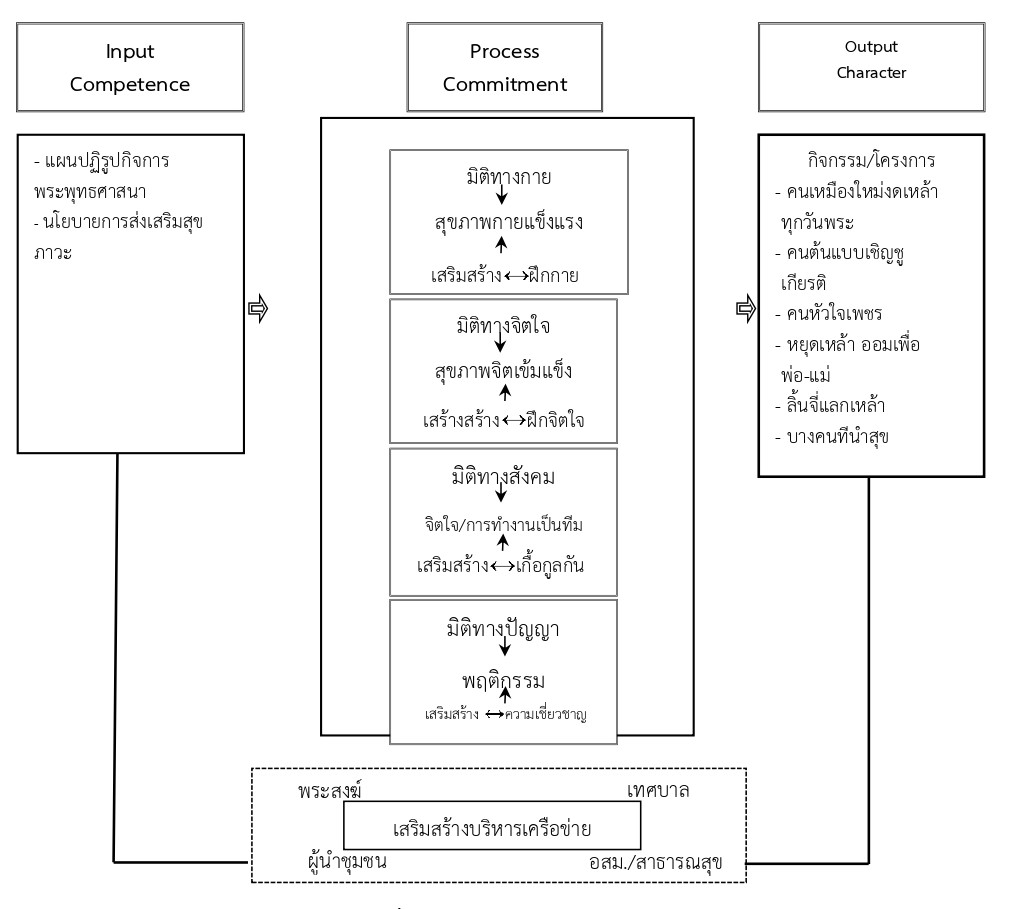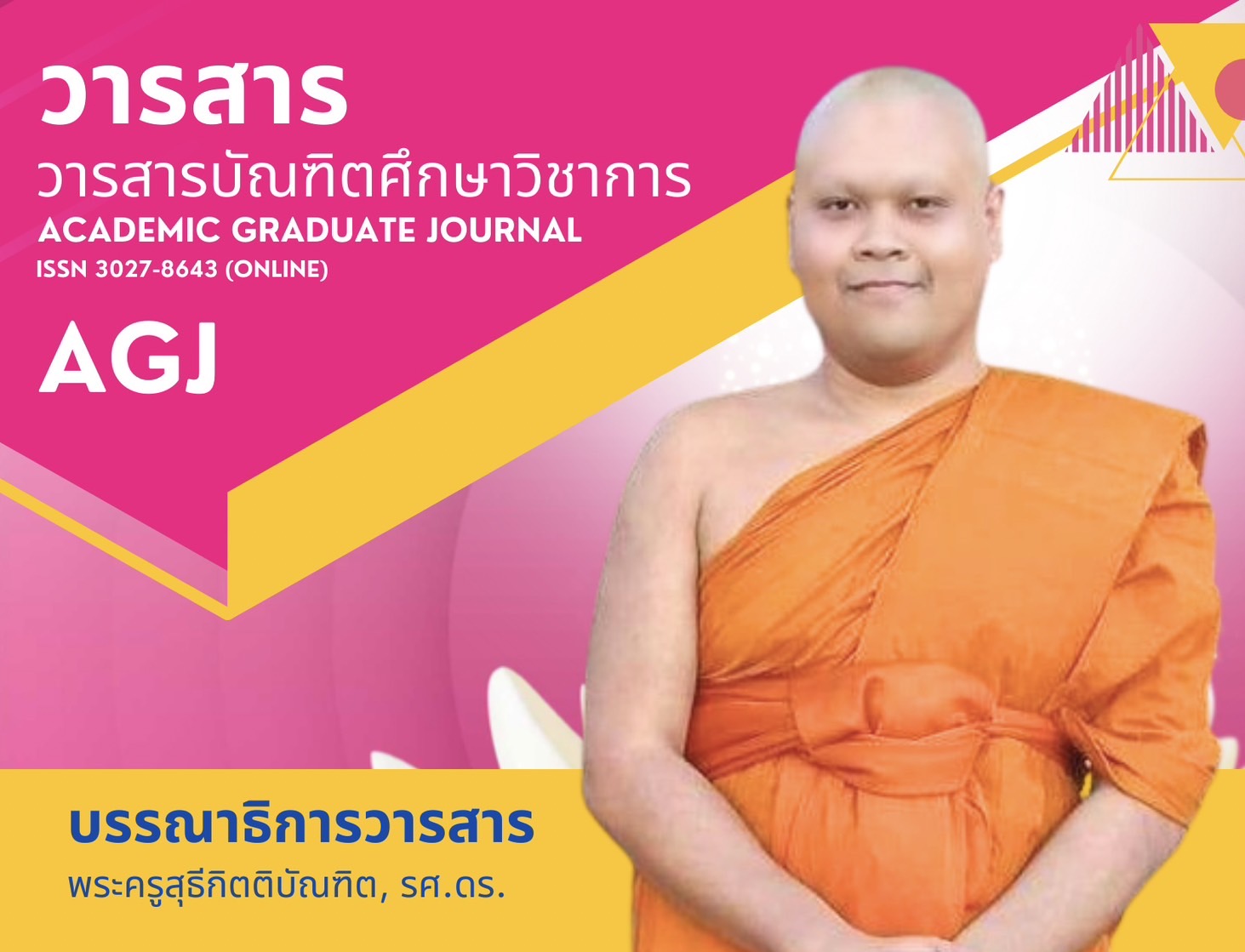WELL BEING PROMOTION AND SOCIAL NETWORK ADMINISTRATION FOR REDUCING ALCOHOL AND SMOKING CESSATION ACCORDING TO BUDDHIST INTEGRATION OF MONKS IN SAMUTSONGKHAM PROVINCE
Keywords:
Enhancing Well-Being, Social Networks, Buddhist IntegrationAbstract
Objectives of this research article were: 1. To study the current state of well-being and social networks among monks in Samut Songkhram Province; 2. To develop activities to reduce alcohol and cigarette use and social networks for ceasing alcohol and cigarette use according to Buddhist integration, and 3. To present a plan for enhancing well-being and manage social networks for alcohol and cigarette use reduction according to Buddhist integration among monks in Samut Songkhram Province. This qualitative research utilized a field survey, semi-structured interviews, and non-participant observation. The participants were divided into three groups: 1. senior monks, clergy, and representatives of Buddhist organizations; 2. public guides who came to make merit on Dhammasavana Day; and 3. network partners and public representatives.
The results of the research revealed that: 1. The current state of well-being at Wat Intharam, Amphawa District, Samut Songkhram Province was a model within the monastery that was a mental rehabilitation center that used herbs in conjunction with meditation to treat drug addicts. 2. Develop activities to reduce alcohol and cigarettes through social networks with monks participating in decision-making together with government agencies and the community. 3. Strengthening well-being and managing social networks to reduce alcohol and cigarettes in an integrated Buddhist way in 4 dimensions. 1. Physical dimension: There was a campaign to provide knowledge about health care to monks in monasteries and the community in various activities organized by the monasteries and government agencies. 2. Mental dimension: There was a transfer of knowledge about Buddhist teachings for use in daily life. 3. Social dimension: Community care by promoting well-being to reduce alcohol and cigarettes in the community and society through community health promotion activities. 4. Intellectual dimension: The temple has organized activities to promote health together with the community to change behavior with wisdom.
References
ณัทธีร์ ศรีดี. (2560). โครงการเสริมสร้างสุขภาวะและการเรียนรู้ของสังคมตามแนวพระพุทธศาสนาโดยการมีส่วนร่วมของพระสงฆ์ในเขตภาคกลาง (รายงานผลการวิจัย). พระนครศรีอยุธยา: มหาวิทยาลัยมหาจุฬาลงกรณราชวิทยาลัย.
บูรกรณ์ บริบูรณ์. (2558). กระบวนการสืบสานเครือข่ายทางสังคมของพระสงฆ์ในการสร้างชุมชนเข้มแข็ง(รายงานผลการวิจัย). พระนครศรีอยุธยา: มหาวิทยาลัยมหาจุฬาลงกรณราชวิทยาลัย.
พระครูใบฎีกาอภิชาต ธมฺมสุทฺโธ และคณะ. (2560). การสร้างเครือข่ายความร่วมมือในการเสริมสร้างสุขภาวะผู้สูงอายุขององค์กรชุมชน ในอำเภอสามพราน จังหวัดนครปฐม (รายงานผลการวิจัย). พระนครศรีอยุธยา: มหาวิทยาลัยมหาจุฬาลงกรณราชวิทยาลัย.
พระครูพิศิษฎ์ประชานาถ (ประยูร นนฺทิโย) และคณะ (2563). การพัฒนาการมีส่วนร่วมของพระสงฆ์ในการพัฒนาชุมชนตามแนววิถีพุทธในจังหวัดสมุทรสงคราม (รายงานผลการวิจัย). พระนครศรีอยุธยา: มหาวิทยาลัยมหาจุฬาลงกรณราชวิทยาลัย.
พระมหาสุทิตย์ อาภากโร และคณะ. (2558). การเสริมสร้างสุขภาวะและการเรียนรู้ของสังคมตามแนวทางพระพุทธศาสนา (รายงานการวิจัย). กรุงเทพฯ: สำนักงานกองทุนสนับสนุนการสร้างเสริมสุขภาวะ.
พระอุดมสิทธินายก และคณะ (2562). การมีส่วนร่วมของพระสงฆ์ในการเสริมสร้างสุขภาวะและเครือข่ายทางสังคมเพื่อลดเหล้าบุหรี่เชิงพุทธบูรณาการในจังหวัดนนทบุรี (รายงานผลการวิจัย). พระนครศรีอยุธยา: มหาวิทยาลัยมหาจุฬาลงกรณราชวิทยาลัย.
สมชาย ลำภู (2563). การพัฒนาชุมชนตามแนวพระพุทธศาสนาในตำบลเหมืองใหม่อำเภออัมพวา จังหวัดสมุทรสงคราม. วารสารพุทธนวัตกรรมและการจัดการ, 3(2), 59-67.







